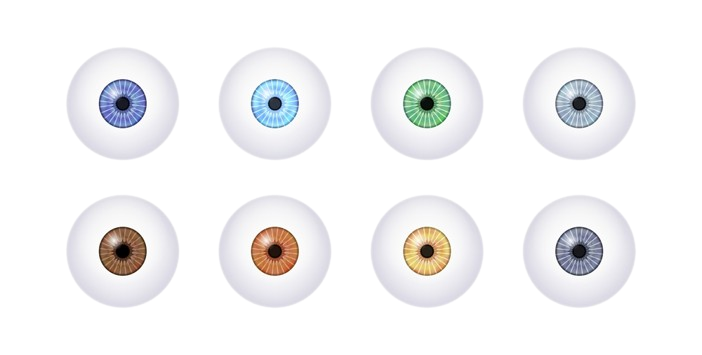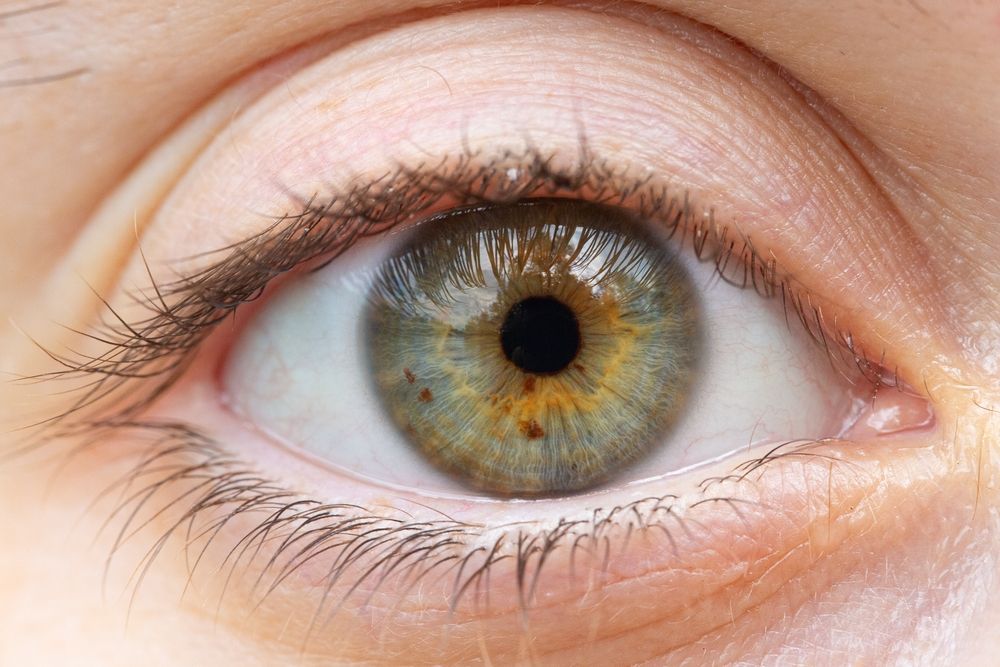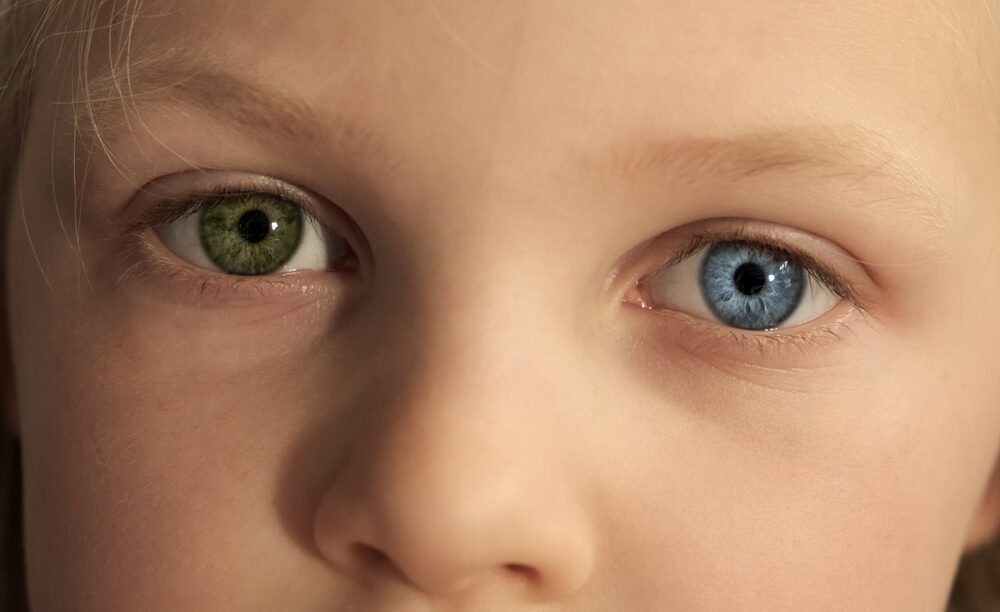Do unusual eye hues contrasting with traditional browns and blues pique your curiosity? The distinct hues of human eyes—green, amber, grey, and hazel—are highlighted in this article along with an analysis of their genetic backgrounds. Let's figure out why these extremely unusual eye colors—which only make up a few per cent of the world's population—are remarkable.
Important lessons learned
The colors of human eyes vary from common tones like brown to unusual colors like amber, green, hazel, and grey. Intricate genetic relationships and particular melanin concentrations frequently cause these colors. Numerous genes, particularly OCA2 and HERC2 on the 15th chromosome, are involved in the genetic cause of eye color.
Unusual eye hues and looks can result from rare eyes diseases such as heterochromia, anisocoria, and albinism. These conditions are typically caused by genetic abnormalities that influence the generation of melanin.
Exploring the World of Distinctive Eye Colors

Our eye color is one of the most intriguing aspects of our physical makeup. It is uncommon for tints, ranging from the most frequent eye color, brown, to green, or even red and violet; it adds aesthetic attractiveness and demonstrates the intricacy of heredity. While brown eyes are common throughout the world, different colors, like:
- Green
- Amber
- Gray
They are intriguingly different but less prevalent.
Every unique shade has a unique genetic background and is notable for being one of the rare eye colors in the global population. About 2 percent of people on the planet have "green" eyes resembling emerald enigmas.
Another rarity is those that are amber in color and have a golden shine. Even rarer to see are irises coloured grey. A few fortunate people are blessed with the ability to see hazel-hued chameleons because of their evasive qualities that force them to tangle.
Emerald Enigma: Green Eyes

Green eyes are among the most intriguing natural marvels, often called emerald enigmas. Their rarity enhances their enigmatic appeal—only 2% of people on Earth possess them. Their captivating color, which is more prevalent in women and Europe, is the consequence of a complicated interaction between heredity and light scattering in the iris.
The captivating green hue found in eyes is caused by low-to-moderate levels of melanin, which are governed by genes linked to the creation of pigments. These eyes have a unique emerald color due to the balance of melanin and the light dispersion in the iris. One of the planet's most fascinating mysteries is the complexity of the genetic elements that influence green eyes.
The Radiant Sparkle: Amber Eyes

Amber-hued eyes. Red eyes offer yet another intriguing exception to the broad spectrum of human eye colors, as they are a dazzling gold color. Warm, golden tones from a deep honey tone to an added coppery tint define these incredibly stunning eyes. This distinct color is more common in animals than in people, making up only about 5% of the world's population.
Pheomelanin, the reddish-brown pigment that determines the color of hair and skin, causes the characteristic golden hue in amber eyes. Violet pigment gives these uncommon irises their captivating shine when it combines with the diffraction of light within the iris. Amber-colored eyes are unique because of their rare incidence and alluring appeal.
The Silvery Storm: Gray Eyes

Grey eyes, sometimes referred to as silvery storm eyes, are the rarest eye color in humans, occurring in only around 3% of the global population. They are far less common than violet eyes. Because of the significant amount of collagen fibres in the iris that give these unusual eye color variations their silver tone, they are sometimes mistaken for variations of light blue eyes.
These people's irises have less melanin pigment and more collagen in the front layer, which gives them this specific tint. It's interesting to note that gray eye colors themselves can vary greatly. In comparison to lighter tints, darker hues could have somewhat higher concentrations or quantities. Researchers find it fascinating to examine the range of human eye colors because of the unique appearance and scarcity of conventional eye hues.
Aside from enhancing one's overall appearance or individuality, having gray-colored irises may have an impact on how people perceive blue light because of their low levels. Humans with gray eyes can shed light on the intricate relationship between our bodies' interactions with collagen and melanin, which determine our eye color.
These will probably continue to pique the curiosity of researchers studying human optics in the future and advance our knowledge of this intriguing feature of our physical constitution. These distinctive hues can be used to investigate the reciprocal interaction between light and sight, which could lead to a deeper understanding of how humans see and interpret visual data daily.
The Charm of the Chameleon: Hazel Eyes

About 5% of people on the planet have hazel eyes, a unique and fascinating eye color distinguished by chameleon-like characteristics. Depending on the light, these unusually colored eyes can change from violet to brown or from red to green. This is a dispersed amount of melanin caused by the characteristic appearance of hazel eyes in the iris.
Hazel eyes are incredibly captivating due to their unusual and stunning color combination, which usually consists of light brown hues in various tones accented with green, gold, or other flecks. Although individuals with colorful irises can exhibit this polymorphism, those from North Africa, Brazil, the Middle East, and Spain are more likely to do so. In these regions, the vividly colored irises contrast even more with darker facial features.
These specific combinations have a unique feature that causes them to appear to be changing color and reflecting sunlight into our vision when the light strikes them at various angles throughout the day. This unique phenomenon, which is brought about by uneven pigment distribution within each orb, raises more questions and explains why so many people find themselves drawn into a person's captivating gaze while they are in proximity.
Shades of Blue Eyes: Common to Uncommon
In certain populations, blue is the most frequent eye color. It can range from the lightest ice blue to the deepest sapphire. The distinctive hues and patterns of blue eyes make them uncommon; some people have remarkably pale blue eyes. Genetics is responsible for these distinctions in blue eye color, with certain families more likely to have lighter or darker tints of the color.
Light Brown Eyes are Uncommon
Commonly dark brown, light brown eyes can occasionally seem almost honey-colored or amber. Even while brown eyes aren't as uncommon as other colors, they nevertheless have a special appeal, especially when compared to paler skin tones. Light brown eyes are desirable in various cultures because of their rarity in some people, which heightens their allure.
The Genetics of Different Eye Colors
The richness and diversity of human biology are demonstrated by the hue of our eyes. It is defined by a unique combination and number of pigments in the iris, mostly impacted by hereditary variables associated with pigment synthesis. This gene mingling gives rise to a diverse range of eye hues and makes the periphery shades rarer. There is more to this tale of eye color than just one gene. Rather, it is the result of multiple genes cooperating. Elements like the interactions and expressions of these genes mostly caused the wide range of colors seen in various human eyes.
How Does Melanin Affect Eye Color?
The pigment melanin, which is responsible for the color of skin, hair, and eyes, is essential for defining eye color. The distribution and quantity of melanin in the iris, or colored portion of the eye, determines the percentage of each person's eye color as well as the tint and color variation within their eye tone; low amounts of melanin produce light green or blue hues, while high concentrations of melanin produce dark brown eyes.
Remarkably, two kinds of melanin have distinct effects on pigmentation of the eye color: Pheomelanin, a yellow-red pigment, influences lighter hues like amber tones, whereas eumelanin, a deep black-brown complex, decides darker shades like black or brown. These two classes interact in an infinite number of ways, giving rise to all the differences that exist today among human populations.
Several Genes at Work
Our eye color is influenced by a complicated interplay of as many as sixteen genes rather than just one gene. The two genes on chromosome 15 that have the most influence in this hereditary cycle are OCA2 and HERC2. OCA2 and HERC2, which are found on chromosome 15, are the most important participants in this genetic process. Humans have a broad variety of eye hues due to a combination of variables, including these two important genes. The body has distinct genetic makeups due to their diverse manifestations and connections within the genetic makeup.
Uncommon Eye Color Conditions
Some illnesses cause people to have unusual eye hues. Some conditions can drastically change how one's eyes look, such as albinism, anisocoria, and heterochromia. These are rare events, but they provide important new information on the complex and varied ancestral human genetic makeup of eye color.
Heterochromia, in which a person has two different-coloured eyes, is one such condition. Pupils with anisocoria have different sizes from one another. In addition, because albinism reduces the amount of pigment and visible blood vessels, it impairs the production of melanin in the skin, hair, and eyes, resulting in lighter or even pink, reddish, or purple tones. Later on, let's explore these fascinating conditions in more detail.
Heterochromia: A Parable of Duplicate Colors
A rare disorder known as heterochromia causes a person to have two distinct eye hues in the same iris. Because each iris has a different amount of melanin, this unusual phenomenon produces an eye-catching contrast in appearance with colored eyes. Heterochromia comes in three kinds: sectoral, central, and total. Heterochromia, although rare, is usually benign and does not need medical attention. Suppose the illness develops out of the blue in adulthood. In that case, it may be a sign of underlying health problems that require medical treatment to be properly handled, such as infections, injury to the eyes, or visual impairments.
Anisocoria: Inequitable Pupils
Uneven pupil diameters typify a fascinating eye condition called anisocoria. Although this rare disorder resembles heterochromia, it affects the pupils instead of the iris. It may occur immediately following childbirth or later in life as a result of certain circumstances or trauma. Treatment for anisocoria is not necessary unless an underlying medical condition is the cause of it.
It's critical to speak with an eye specialist right away if you observe a sudden shift in the size or color of your pupils. Even though anisocoria is innocuous on its own, its sudden development may be a sign of more serious disorders that require medical treatment, such as glaucoma or nerve damage.
The Light Spectrum of Albinism
A genetic condition called albinism affects how much melanin—the pigment that gives our hair, skin, and eyes their color—is expressed. Because of this genetic mutation, lighter skin and hair tones and a range of light-eye colors. Sometimes people with albinism have pink, red, or violet eyes because of visible blood veins in their iris.
Even though albinism only affects a tiny portion of individuals worldwide, it can have a big impact on a person's eyesight. Lack of pigmentation frequently causes problems like decreased vision, a hard time adjusting to bright lights, and uncontrollable moving eyes. That being said, many who with this illness are still able to have happy lives. Rather, by showcasing its distinct eye hues, it increases diversity and highlights yet another component of what makes us human.
Relationships Between Eye Color and Health
Something remarkable that goes beyond aesthetics is the hue of our eyes. Eye color and possible health benefits or hazards may be related, according to studies. People with lighter-colored eyes, for example, maybe more susceptible to illnesses like ocular cancer and macular degeneration. On the other hand, because they contain more melanin, darker eyes may offer more protection.
Remarkably, a recent study discovered that labouring mothers with light-coloured irises could tolerate more discomfort compared to those with dark irises. It should be highlighted that a variety of factors, of which eye color is only one, influence an individual's health outcomes. Maintaining a healthy lifestyle and scheduling routine checkups are essential to maintaining strong vision.
Bringing Out Your Special Eye Color
Knowing the genetics and science underlying typical eye color could motivate you to enhance your distinctive traits. There are easy ways to make your eyes stand out even more, whether you have unusual green eyes or brown ones that are more common.
It is possible to accentuate the inherent beauty of various eye hues by wearing complementing clothing colors and choosing appropriate eyeglasses and makeup tints. Warm colors like brown or gold in frame selections can accentuate the richness of green eyes. However, amber eyes result in brown eyes, which are better suited for contrasting frames like navy blue or black more highlighted.
Regarding hazel eyes in particular, some hues worn close together will make them look better, even though matching clothes won't always help. Another important factor in bringing out the color of one's eyes is makeup. Amber-coloured eyeshadow looks brighter and more intense when applied in golden and bronze tones.
The Science of Color Change in Eyes
However, our eye color is predetermined at birth, scientific and technological developments have made it feasible to alter our eyes' natural color. The color of one's eyes can be changed through iris implants, laser surgery, or the use of colored contact lenses. Every technique has advantages and disadvantages that should be properly considered.
Colored contacts, which come in a variety of hues, are the most widely used safe way of changing the color of your eyes. Before wearing contacts, it is advised to consult an optometrist to make sure they won't damage your eyes. More intrusive techniques, including laser therapy or the implantation of artificial iris implants, have unique health risks and are only authorized for medical use in a few nations.
Final Thoughts
Our diverse genetic composition as humans is reflected in the wide diversity of eye hues, from common browns to unusual greens, and the rare genetic disorder known as heterochromia. Eye color is fascinating, but it also provides information about individual style, general health, and heredity. Eyes serve as a constant reminder that we are all different and that's something to be proud of. Your unique identity is enhanced by your iris, which may display blue or brown tones with green flecks amidst them.
































